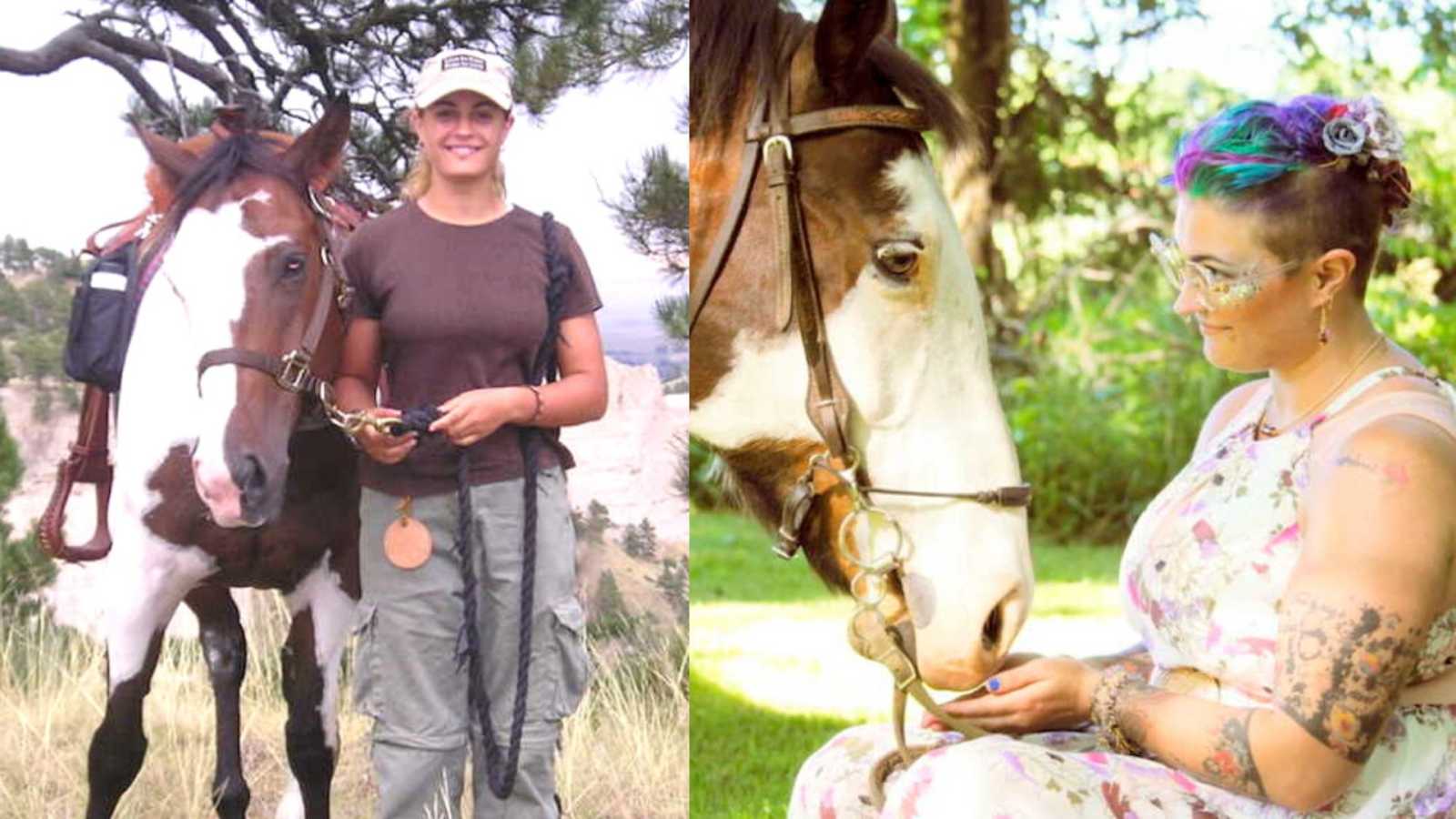“I don’t want to be in the doctor’s office again, to explain and answer questions when I am so tired. It is a tedious process to begin with, and I don’t have the patience for it now. I am preoccupied. I’m supposed to find out today. I tap my foot. ‘Remember to breathe, you have to breathe, just breathe.’ I do. I breathe. I don’t want an answer, and yet I don’t want to walk away without one.
Dr. Box settles into his rolling chair. I keep breathing, on the edge of the conversation I have been waiting for. It all ran together in my mind, only certain phrases catching in the wrinkles of my brain. Chronic autoimmune disease, potential risk of organ damage. ‘So she’ll always be sick?’ ‘Yes, she’ll always be sick but we caught it early so, with medication and lifestyle changes, we should be able to control the… lupus.’
A heavy curtain is falling over my mind. It is thick and cold and all I can hear is a voice, the processed, perfectly-shaped tone of a spokesman from a commercial I heard as a child: ‘Lupus ruined my daughter’s life. Get information. Get in the loop. Visit the Lupus Foundation of America website and get the facts.’ I see the TV screen, too. The young woman is frozen in time, scrambling for apples she has dropped. I drop things, too. ‘Lupus ruined my daughter’s life.’
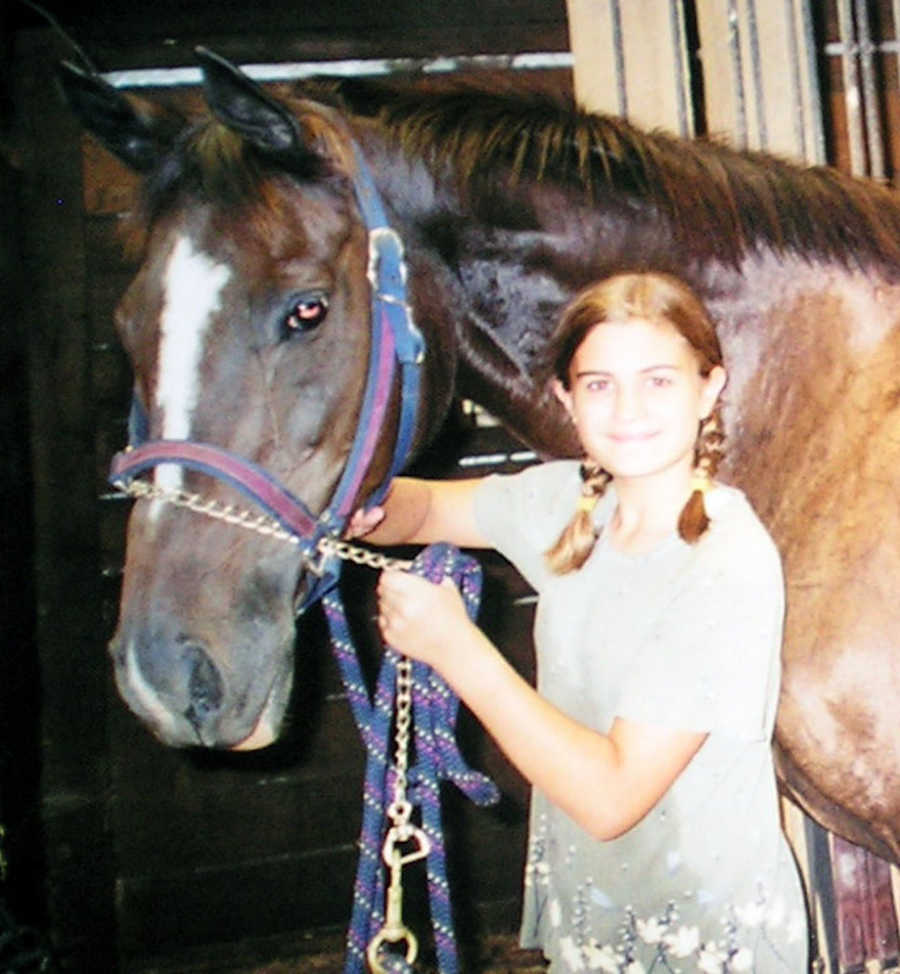
Yesterday, I dropped my hairbrush. I couldn’t finish. My hair is still knotted in the back. This morning, I fell down walking from my bedroom to the bathroom. Last week, I passed out briefly, stepping out of the shower. And this was an improvement from being nearly bedridden for seven months. These things were with medication. These things have happened and they have been happening. They will continue. ‘Lupus ruined my daughter’s life.’ Yes. Dialogue continued. Information, questions, answers, brochures, prescriptions. Arthritis, fatigue, cognitive degeneration, sunlight sensitivity, thinning hair, poor circulation, chronic pain, the ever-lurking possibility of kidney failure.
‘I’m sorry,’ Dr. Box says. ‘If you like, we have resources for counseling and chronic illness support groups in the area.’ ‘Um. No thanks. Maybe later.’ My reply is tentative as I glance back and forth between my mother and the doctor. ‘Well, alright.’ He reaches for his clipboard. ‘Now we know what we’re dealing with, there are a few prescription treatment options…’
I leave the office with two refill scripts, two new prescriptions, some samples, and a follow-up appointment. And the diagnosis. An answer, but no cure. ‘How do you feel?’ Mom asks quietly. Her hand is poised to start the van but she waits intently for me to speak.
‘Well, we knew it was a possibility.’ I know that isn’t an answer to her question, but I’m not sure I have one anyway. I’m officially diagnosed, so what? I have a specific target for blame, but it is not as satisfying as I’d hoped it would be. I feel blank, a heavy, sort of gray indifference that leaves my mind clear. Not ‘clear’ as in ‘clean,’ or as if it has been de-cluttered. More like a wide space from which everything has been emptied out, leaving me only with a vague sense of awareness anything was ever there at all, like the faint cutouts left behind by boxes moved from a dusty floor.
‘I am not dying,’ I think to myself. ‘I’m just 16 and past my prime. That’s all. There are worse things.’ I think of terminal cancer and poverty and loved ones dying. I’m fine. For the next few years, I tread water. I feel so dirty, so cluttered and like my insides are crusted with some sort of grime. I am so tired and stiff, I can’t help feeling like a rusty machine. ‘Maybe if I drank bleach,’ sometimes I think. ‘Maybe if I turned inside-out and scrubbed my veins out with soap, drained and then replaced the blood inside, put my liver in the wash on delicates. Surely after all sanitation measures, the disease would be eradicated.’
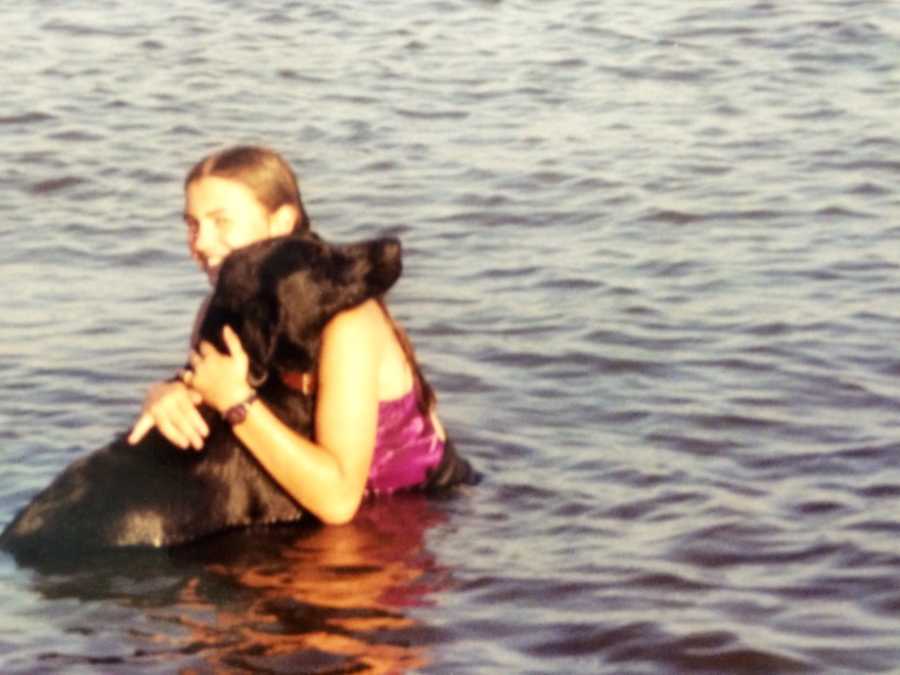
I continue to swallow the pills they give me, knowing they will never wash it all away. It’s the weirdest thing, I observe, to feel claustrophobic because of something inside of you instead of because you are inside something. There must be something I can do. There is always something to be done. Doing fixes things, right? Three action-steps, or five, or twelve? There’s nothing.
My subconscious makes a violent lunge for control and I become anorexic. I have no language for this, no pre-scripted way to express the way my life had turned upside-down, so I write it out in scars on my thighs, my shoulders. I try to keep singing competitively as I had been—for years I’d been a classically trained vocalist—but I’m too tired to keep up with the rigorous practice it takes. It seems one of my medications has caused a catch in my voice no amount of warm-up exercises will smooth out.
I quit the swim team because of my joint pain. I stop working at the stable where my horse is boarded. Unable to participate nearly as much in social activities, I drift apart from most of my friends. I write more, though, and make more art. On good days, I ride my horse or explore the woods with my dog. I start volunteering on some weekends with Pets for Life, taking my dog to nursing homes and inner-city parks so some folks with no pets can enjoy one once in a while.
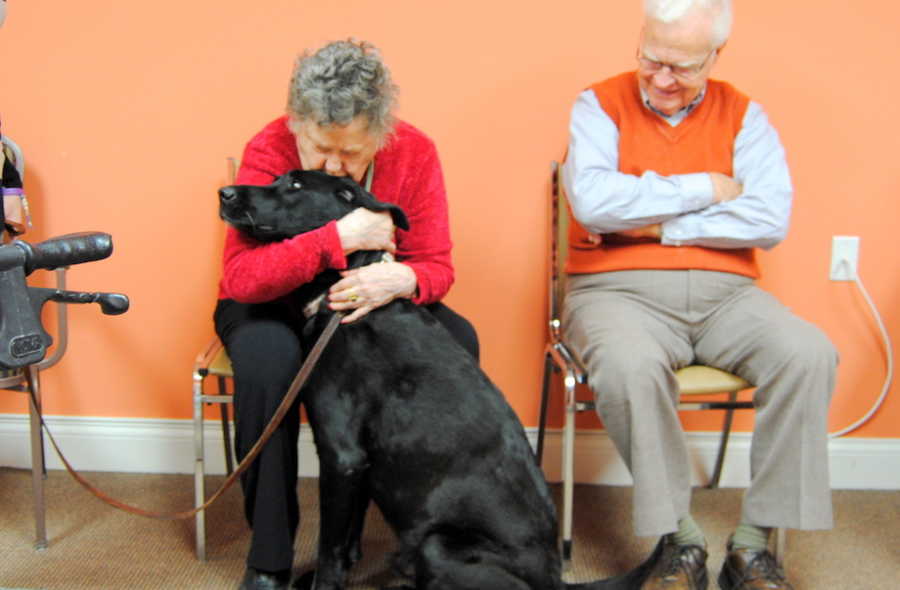
I go to therapy. These things help me establish a new ‘normal,’ despite mourning the loss of my old one. The wound is not quite so fresh anymore, and it doesn’t re-devastate me when I’m also diagnosed with fibromyalgia. Different names for the same things. It doesn’t change anything.
Weather changes and extremes are difficult. The heat makes me dizzy and fatigued. The summer sun makes me break out in hives. The cold makes me ache and irritates my Raynaud’s Syndrome—the circulatory disorder that often accompanies autoimmune diseases. One winter, one of my toes turns black and I nearly have to have it amputated. It’s saved through a series of three spinal injections to open up the blood vessels in my extremities. Other winters leave my feet and ankles scarred where patches of surface tissue died from lack of blood flow. I learn to be very careful in the cold: special socks, good shoes, no extended time outdoors. Even still, during the winter months, my feet go numb regularly and then cramp painfully until the feeling returns. It happens in my hands too, but my feet are worse.
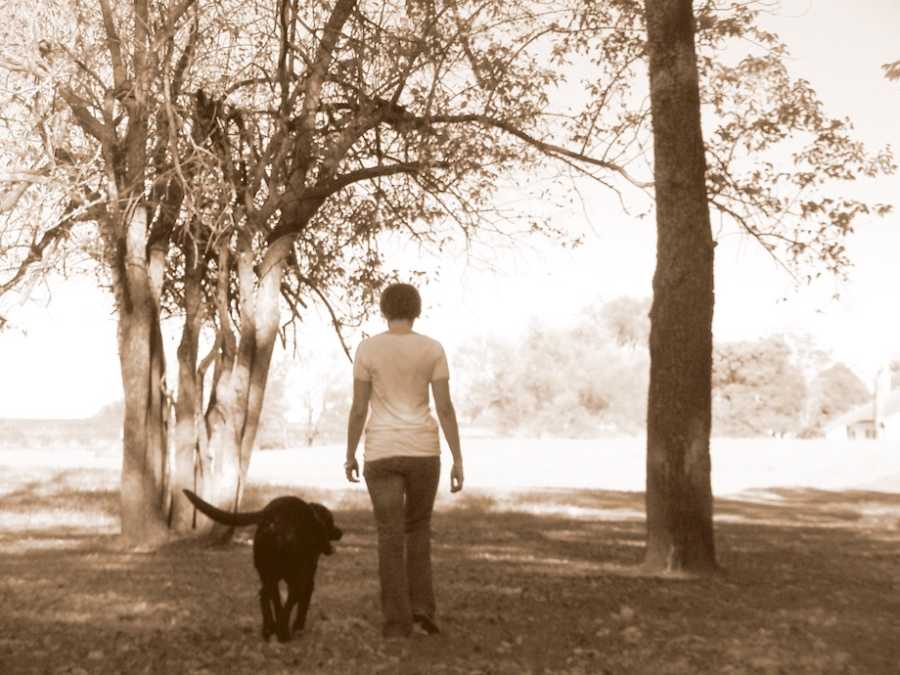
I feel fragile, like a china doll, and it shakes my sense of identity. I was a rough-and-tumble child, an athletic adolescent, proud in my boldness, independence, and durability. Now I have to live so carefully, conditions just right, medications and supplements twice a day, monitored by specialists. I feel like a hothouse orchid still struggling to bloom, when before I was a thriving scrubland thistle—hardy, bright, and free.
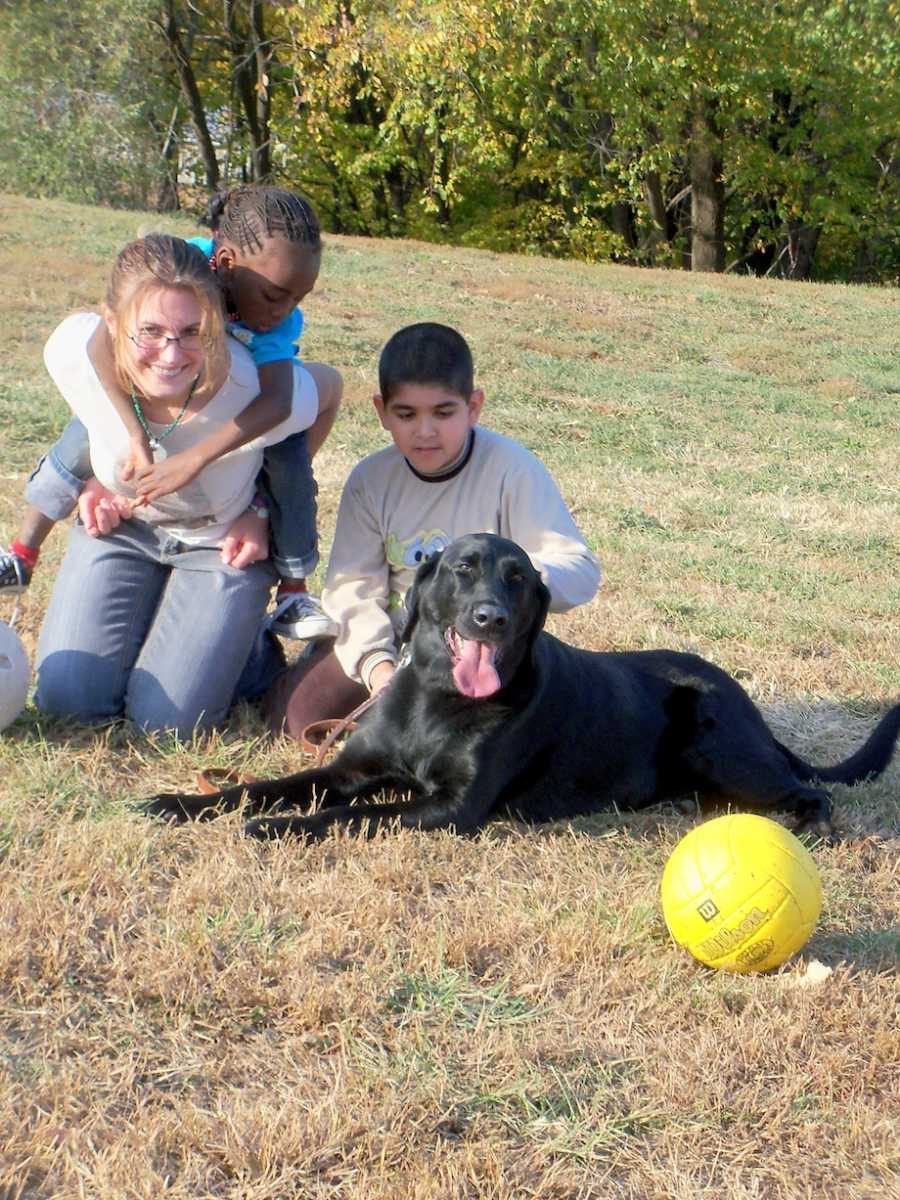

During my freshman year in college, I start out with a double major. It doesn’t take long before I realize how impossible that will be for me to keep up with, and I change to a major and a minor. Then just a major. Over the span of five years, with accommodations from the school and support from my family, I struggle through three-quarters of a psychology degree. School is exhausting, and the cognitive dysfunction that comes with my autoimmune diseases makes academics incredibly frustrating. I don’t enroll the following semester.
In 2013, I meet someone, and there are the questions I always worry about: ‘Will my chronic illness scare them off? Will they blame me for the way my symptoms affect our dating life? What will they think when they see me on a bad day? Will they think I’m exaggerating about how much my illness affects me?’
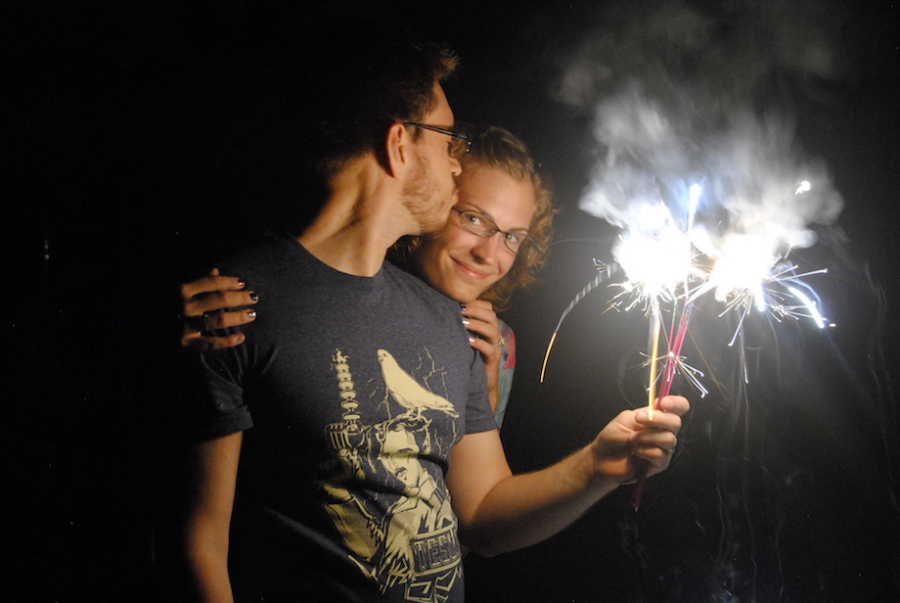
Thankfully, this time my worries are unfounded. We get married, and it is beautiful. It is beautiful but it is hard to navigate sometimes, this mixed-ability marriage. What do you do when you’ve seen no model for this? Love in the time of illness, when illness is all the time? He says he knew what he was signing up for, but hell if I knew it would be quite like this and that quite so much would be in his hands so often. The breadwinning, the household chores, taking care of me on the worst days. For the first couple of years, I tell him, ‘It won’t always be this way.’ He tells me it’s okay, but I search for ways to do more, to be more.

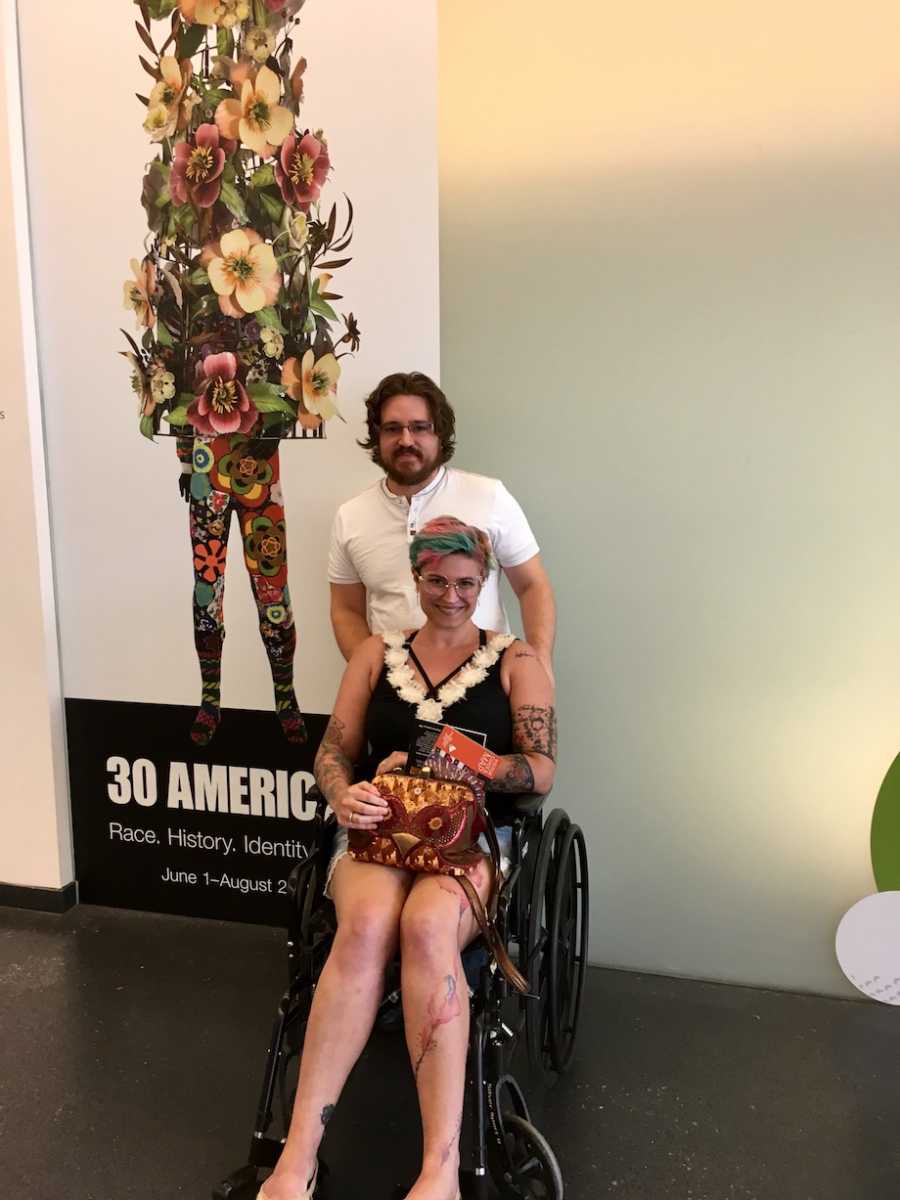
Each time, I end up over-extended, exhausted. He rolls with the punches: the new medications, the dietary experiments, the attempts at part-time jobs I can never keep up with. In time, we settle into a way of living. He works full time. I do what chores I can. Some days, it’s enough to make a difference and some days, it’s none at all. He does the rest, and our families help us. We’re fortunate not to live too far from them. He assuages my guilt by telling me he married me for who I am, not what I do and he’d rather me have the energy to live a rich life and engage with him than spend my limited resources on daily domestic tasks. It took me a while to believe he wasn’t saying it just because he knew it was what I wanted (needed) to hear and that he was being truthful when he said he didn’t resent me or the accommodations we’ve had to make to our lifestyle because of me. I do believe him now, and his support is something I never take for granted. I’ve done a lot of emotional healing since that first diagnosis in 2006, and the way he’s loved me has been no small part of it.
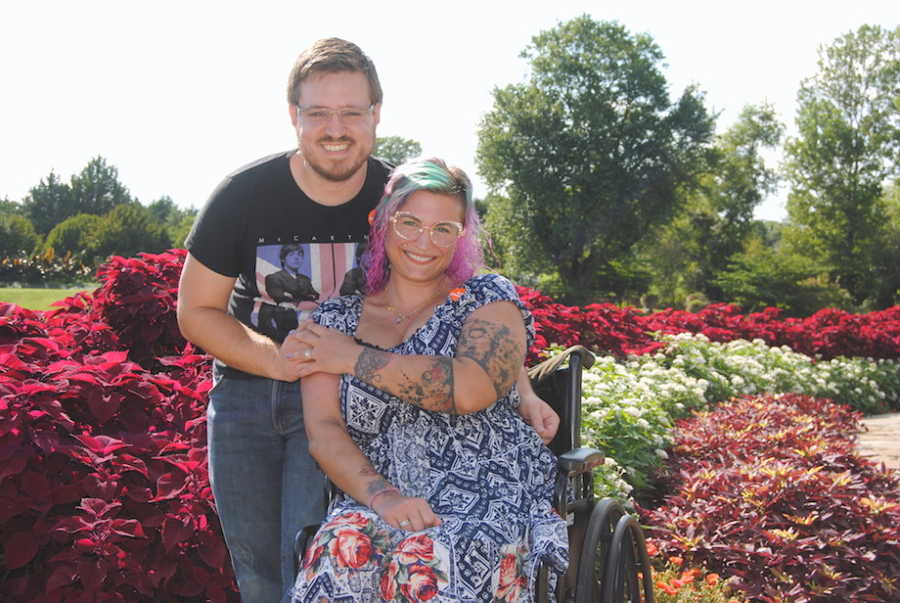
The support of my family, access to therapy, and a good rheumatologist have been incredibly instrumental as well. After fourteen years of being sick, I’m finally starting to figure out how to live with chronic illness instead of fighting it all of the time. I’ve learned to be compassionate towards my body and my limitations. I’ve learned art is cathartic for me. Tattoos help me reclaim my body in a healthy way and express myself even when I have no energy. I’ve learned to exercise in ways that make my body feel better instead of worse, and how to be gentle with myself. I’ve learned about advocating for myself and for other disabled people. My doctor prescribed a wheelchair for me, to help with the bad days and the long days, and that’s made a difference too.
It’s a continuous journey, though. Every time my life changes, I have re-learning to do. I am carving out my own path always. I have a compass but no map. I’ve learned to accept it will always be that way, and to hone my trailblazing skills rather than searching frantically for pre-scripted directions.
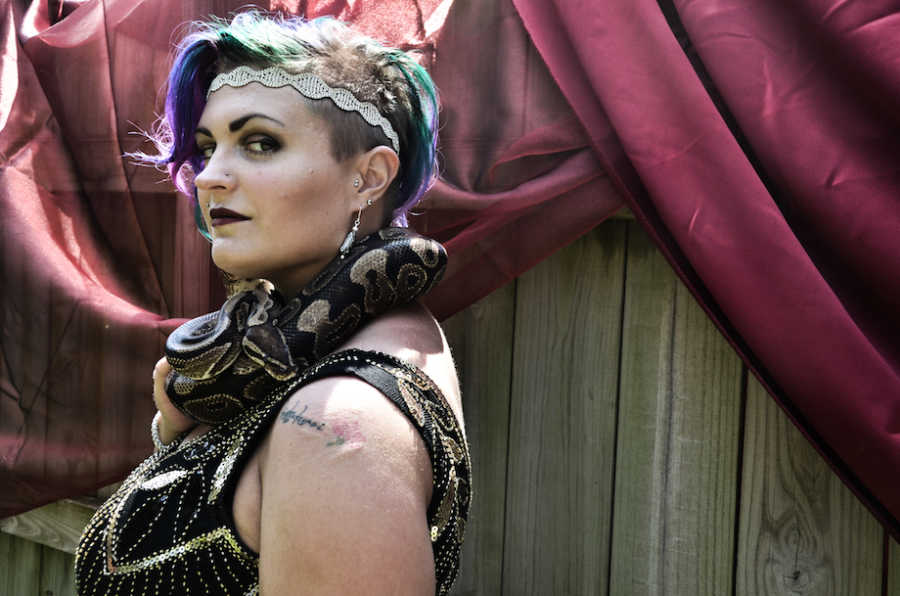
I still grieve. I still mourn who I was before, and the life I could live if I wasn’t so tired and sore most of the time. I’m often frustrated by my limitations. It isn’t a coincidence that chronically ill people have higher rates of depression and anxiety than the general population. But through it, I’ve learned so much. I’ve connected with beautiful people. I’ve experienced love and loyalty at depths lots of people probably never have the opportunity to. I’ve gained a perspective that increases my capacity for empathy. I’ve learned to wring the beauty from everything I can and to live hard, each chance I get. I’ve learned I am still bold and durable, hardy and bright. All of these things, I hold together in the same space, the light and the shadows that form the shapes of my story.”
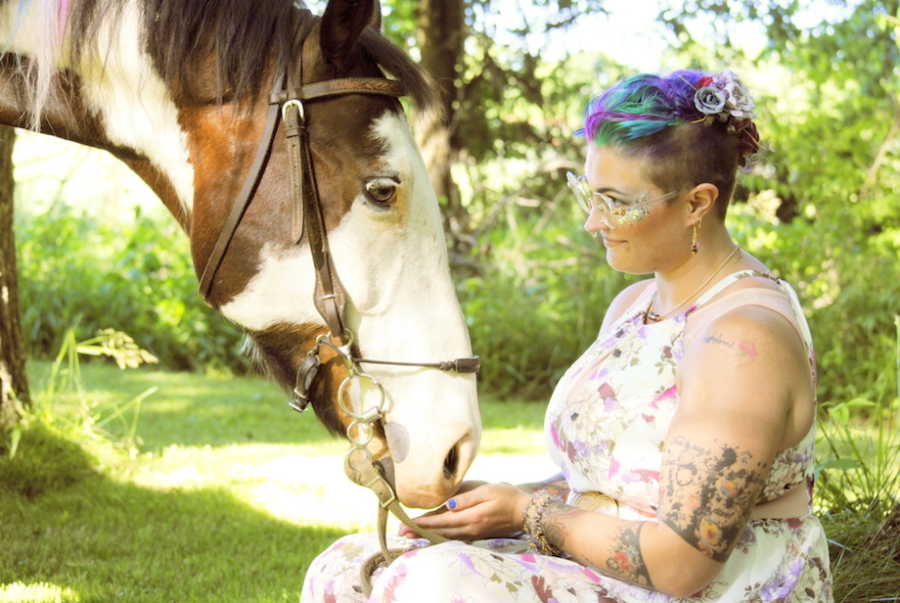
This story was submitted to Love What Matters by Elise Huther. You can follow their journey on Instagram. Learn more about Elise’s art on their website and Facebook. Do you have a similar experience? We’d like to hear your important journey. Submit your own story here. Be sure to subscribe to our free email newsletter for our best stories, and YouTube for our best videos.
Read Elise’s powerful backstory on their mixed-orientation marriage:
And Elise’s journey as a #MeToo survivor:
And their struggle with an eating disorder:
Provide hope for someone struggling. SHARE this story on Facebook to let them know a community of support is available.

